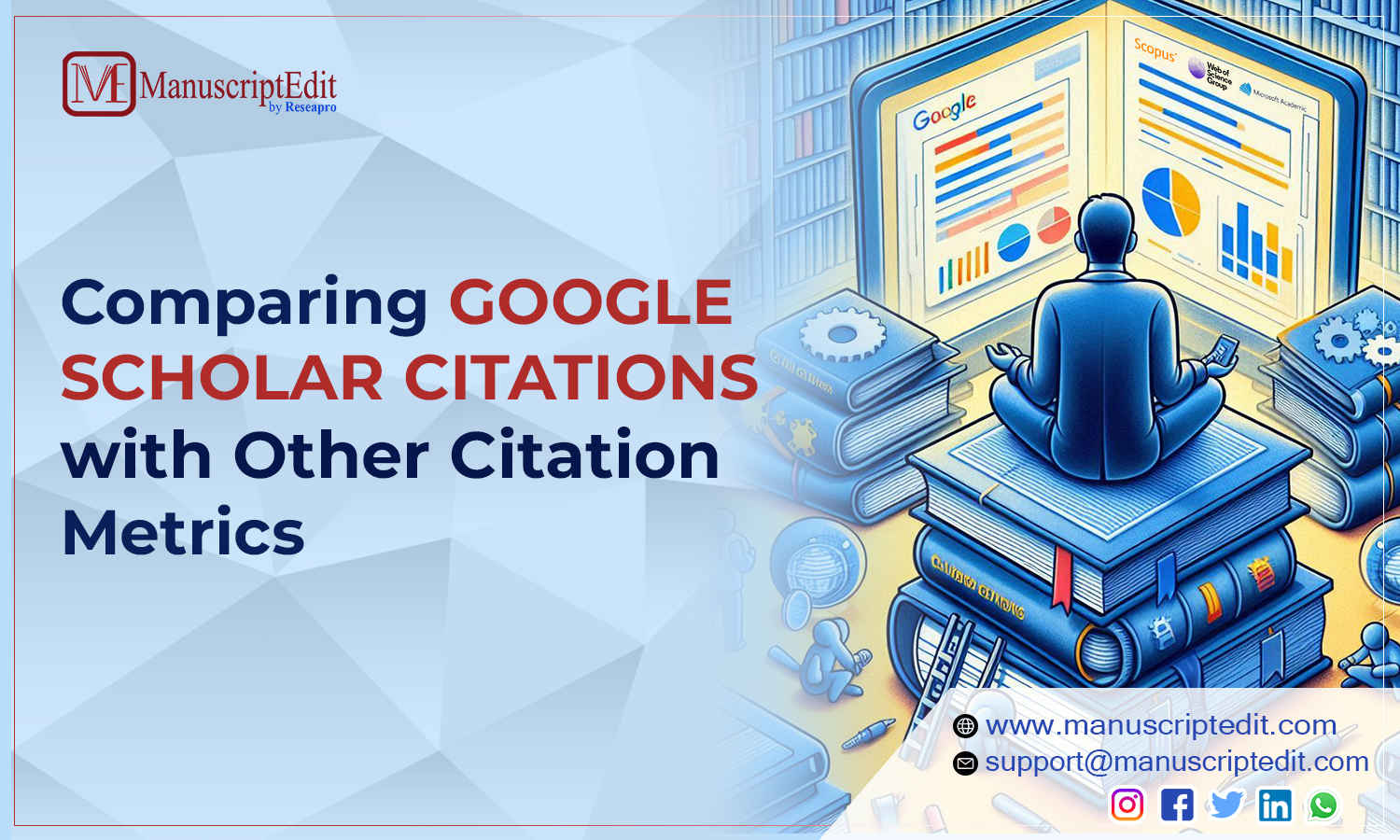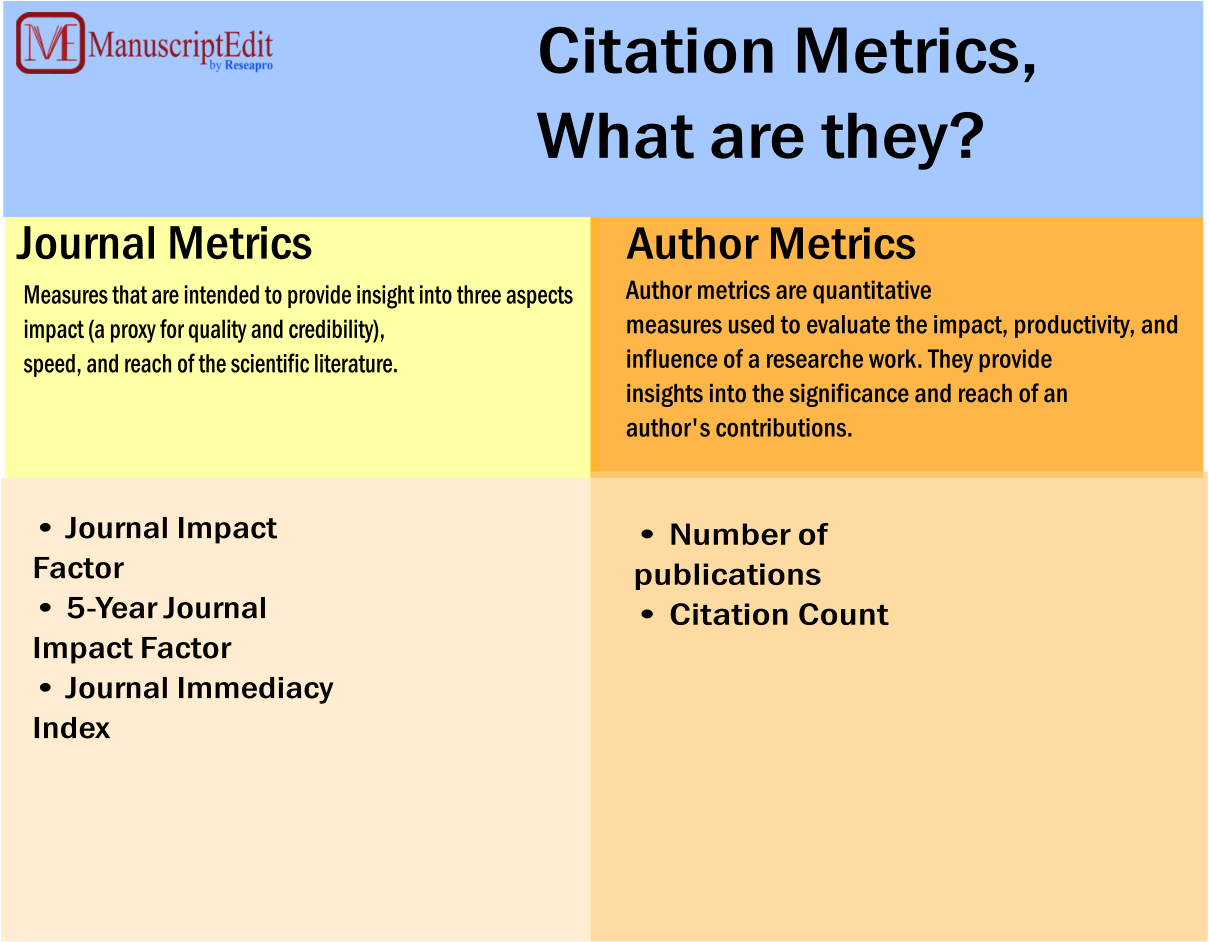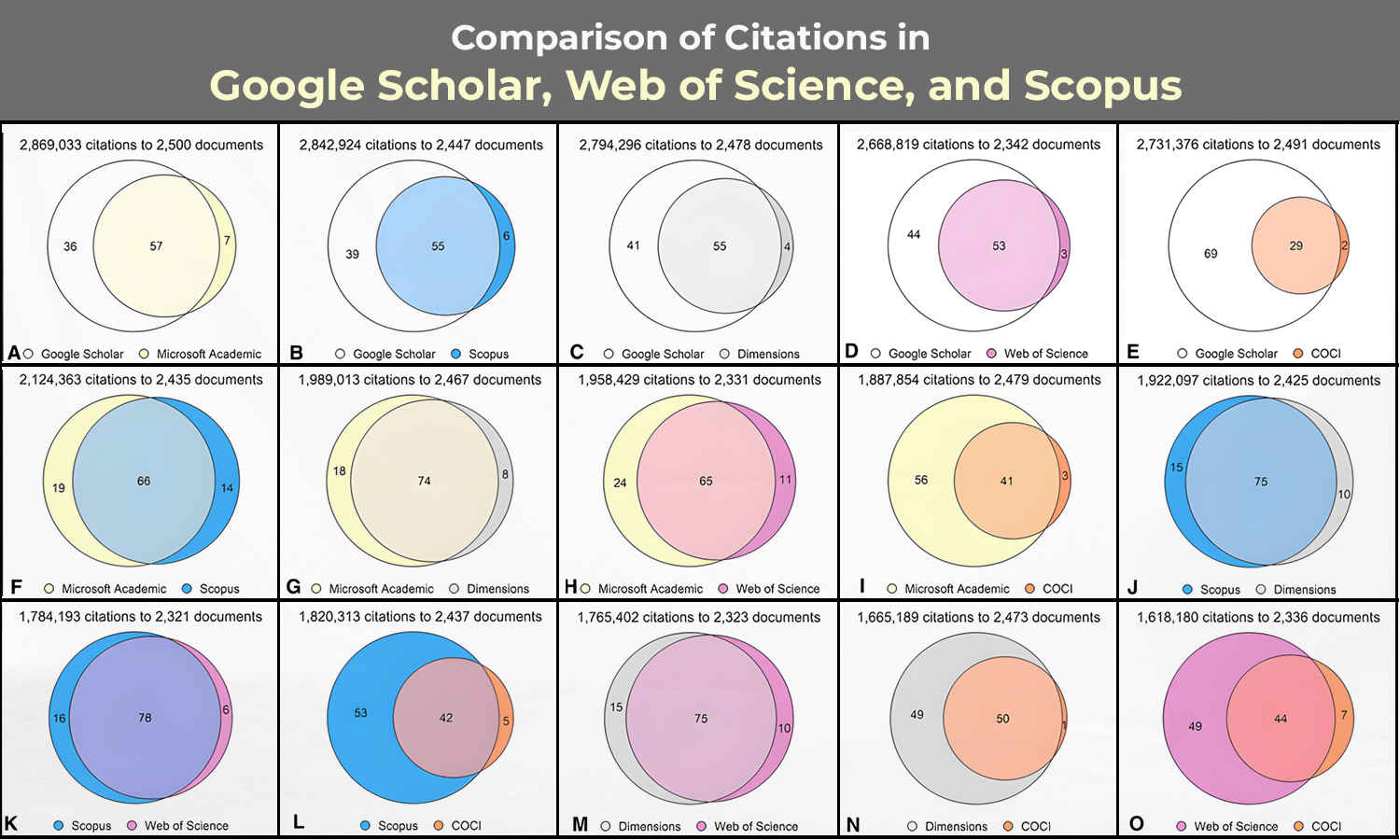|
Getting your Trinity Audio player ready...
|
 Comparing Google Scholar Citations with Other Citation Metrics
Comparing Google Scholar Citations with Other Citation Metrics
Citation metrics play a crucial role in academia, measuring research impact and influence. Google Scholar Citations, Scopus, Web of Science, and Microsoft Academic are key players.
What are Citation Metrics?
Metrics used to count, measure, rank, analyses and compare a journal / article / author / institution / organization’s research impact, based on their scholarly published articles and their citations One of the most widely used methods in the field of bibliometrics – the statistical analysis of written publications such as books and articles. Citation metrics base their data from citation indexes, which are produced by different publishers, e.g. Thomson Reuters, Elsevier.
Citation metrics are used for several important reasons in academic and research contexts:
1. Measuring Impact and Influence: Citation metrics help quantify the impact and influence of a research work, author, or journal. Highly cited works are often considered to be of high quality and significant impact.
2. Evaluating Research Quality: Funding agencies, institutions, and review committees often use citation metrics to assess the quality and importance of research outputs when making decisions about grants, promotions, and tenure.
3. Tracking Trends and Developments: By analyzing citation patterns, researchers can identify emerging trends, key developments, and influential works in a particular field of study.
4. Identifying Key Researchers and Institutions: Citation metrics can help in identifying leading researchers, influential papers, and top institutions in a given field, facilitating collaboration and networking.
5. Informing Library and Subscription Decisions: Libraries and institutions use citation metrics to make informed decisions about which journals and publications to subscribe to, ensuring access to high-impact and frequently referenced research.
6. Enhancing Research Visibility: Authors and researchers use citation metrics to demonstrate the reach and impact of their work, which can enhance their professional reputation and visibility in the academic community.
7. Benchmarking and Comparison: Citation metrics provide a standardized way to compare the performance and impact of research across different fields, institutions, and countries.
Common citation metrics include the h-index, impact factor, and citation count, each providing different perspectives on research impact and influence.
Citation metrics come in various forms, each providing a unique perspective on the impact and influence of research.
Citation metrics are classified into two major types journal metrics and author metrics:
Journal Metrics
1. Impact Factor (IF):
– Definition: The average number of citations received by articles published in a journal over a specific period, usually two years.
– Use: Assesses the relative importance of a journal within its field.
2. Eigen factor Score:
– Definition: Measures the influence of a journal based on the number of incoming citations, with adjustments for citation quality.
– Use: Reflects the journal’s overall influence in the scientific community.
3. Article Influence Score:
– Definition: A measure of the average influence of a journal’s articles over the first five years after publication.
– Use: Complements the Eigen factor Score by focusing on article-level impact.
Author Metrics
Traditional/classical metrics
Example: Citation Count, H-Index, G-Index, PageRank Index, I-10 Index.
Alternative metrics
Examples: Altmetrics, Plum Analytics.
Author profiles.
Examples: ORCID, Researchgate, ResearcherID, Scopus author identifiers.
• Citation Count:
– Definition: The total number of times a paper or an author’s work has been cited by other works.
– Use: Measures the direct impact of a specific work or an author’s entire body of work.
• h-index:
– Definition: An author has an h-index of *h* if they have *h* papers each cited at least *h* times.
– Use: Balances productivity and impact, indicating sustained influence.
• i10-index:
– Definition: The number of publications with at least 10 citations.
– Use: Simple measure of high-impact works, commonly used in Google Scholar.
• Altmetrics:
– Definition: Measures the online attention and engagement a research work receives across social media, news outlets, blogs, and other platforms.
– Use: Captures broader impact and immediate public engagement beyond traditional citations.
• Google Scholar Citations:
– Definition: Total number of citations received by an author’s works indexed by Google Scholar.
– Use: Broad measure of an author’s impact, encompassing a wide range of sources.
• 6. Google Scholar h-index:
– Definition: An author has an h-index of *h* if *h* of their papers have been cited at least *h* times in Google Scholar.
– Use: Measures both productivity and impact within the Google Scholar database.
• 7. Google Scholar i10-index:
– Definition: The number of publications with at least 10 citations, as tracked by Google Scholar.
– Use: Simple measure of an author’s high-impact publications.
Google Scholar Citations
Authors can monitor their publications, citations, and h-index using the Google Scholar Citations tool. It compiles information from books, articles, theses, conference papers, and other sources. Google Scholar’s algorithm matches references to its extensive database by extracting citation data from web-based material.
Citation counts are periodically updated to reflect newly published works and discoveries. Authors can build profiles to fix mistakes, combine duplicate entries, and keep track of co-authors’ citations. Additionally, Google Scholar Citations provides information on study impact, collaboration, and citation patterns.
Other Citation Metrics
Prominent citation databases that monitor the impact of research include Scopus, Web of Science, and Microsoft Academic. Scopus and Web of Science use manual indexing and professional curation to ensure high-quality, accurate citation data.
Microsoft Academic extracts citation data from web-based sources using algorithms driven by artificial intelligence.

Comparison of Citations in Google Scholar, Web of Science, and Scopus
- Coverage: Google Scholar has the broadest coverage, including grey literature and unpublished materials, while Web of Science focuses on high-impact journals and conference proceedings, and Scopus covers a wide range of sources, including journals, conference papers, and book chapters.
- Accuracy: Web of Science has the highest accuracy due to rigorous quality control. At the same time, Google Scholar may include duplicate or incorrect citations. Scopus uses a more thorough citation-matching algorithm than Google Scholar, but it may still need corrections.
- Citation counts: Google Scholar tends to have higher citation counts due to its broad coverage, while Web of Science has lower citation counts due to its focus on high-impact sources. Scopus has mid-range citation counts due to its balanced coverage and accuracy.

Why Does Scopus Show Less Citations Than Google Scholar?
Scopus and Google Scholar have different scopes and techniques for tracking citations. Google Scholar contains theses, unpublished works, and grey literature, while Scopus indexes information exclusively from verified publishers. Furthermore, Scopus’s citation matching mechanism is more exacting, which could result in fewer but higher-quality citations being recorded.
How Accurate Is Google Scholar Citations?
It’s important to note that Google Scholar’s citation accuracy can vary significantly due to its extensive coverage and automated indexing procedure. This can lead to inaccurate citation matching, duplicate records, and insufficient or inaccurate metadata.
Furthermore, Google Scholar’s inclusion of non-peer-reviewed sources can artificially inflate citation numbers. It’s estimated that 10–30% of citations could be misstated or duplicated, underscoring the need for vigilance when using this platform.
How Does Google Scholar Measure Citations?
To calculate citations, Google Scholar automatically indexes web-based content, such as books, papers, and theses. Its algorithm extracts document citation data and compares the references to its database. Citation counts are periodically updated to reflect newly published works and discoveries. In addition, authors can create profiles on Google Scholar, which helps them fix mistakes and guarantee proper crediting.
 Is Google Scholar Better Than Scopus?
Scopus and Google Scholar have different merits. Google Scholar is perfect for interdisciplinary and developing subjects since it provides more comprehensive coverage, including unpublished resources and grey literature. Scopus is better suited for established fields and high-stakes evaluations because of its strict quality control and carefully chosen information. The decision is based on the study’s needs and aims.
Factors to Consider
Discipline-specific citation practices should be considered when comparing citation data because specific fields have higher citation rates than others. Networks of co-authors and self-citation can also impact citation counts. Since databases may have varying publishing lag times and update schedules, timeliness, and update frequency are essential. Furthermore, consider each database’s scope; some might concentrate on journal articles, while others might contain book chapters, conference proceedings, or grey literature. These elements must be considered when assessing research performance because they significantly impact citation metrics.
 Conclusion
Understanding the strengths and limitations of each citation metric is crucial; use them wisely, in context, and in combination for a comprehensive picture.
References
- https://asistdl.onlinelibrary.wiley.com/doi/full/10.1002/meet.14504301185
- https://jamanetwork.com/journals/jama/fullarticle/184519
- https://bio-diglib.biomedcentral.com/articles/10.1186/1742-5581-3-7
Â



